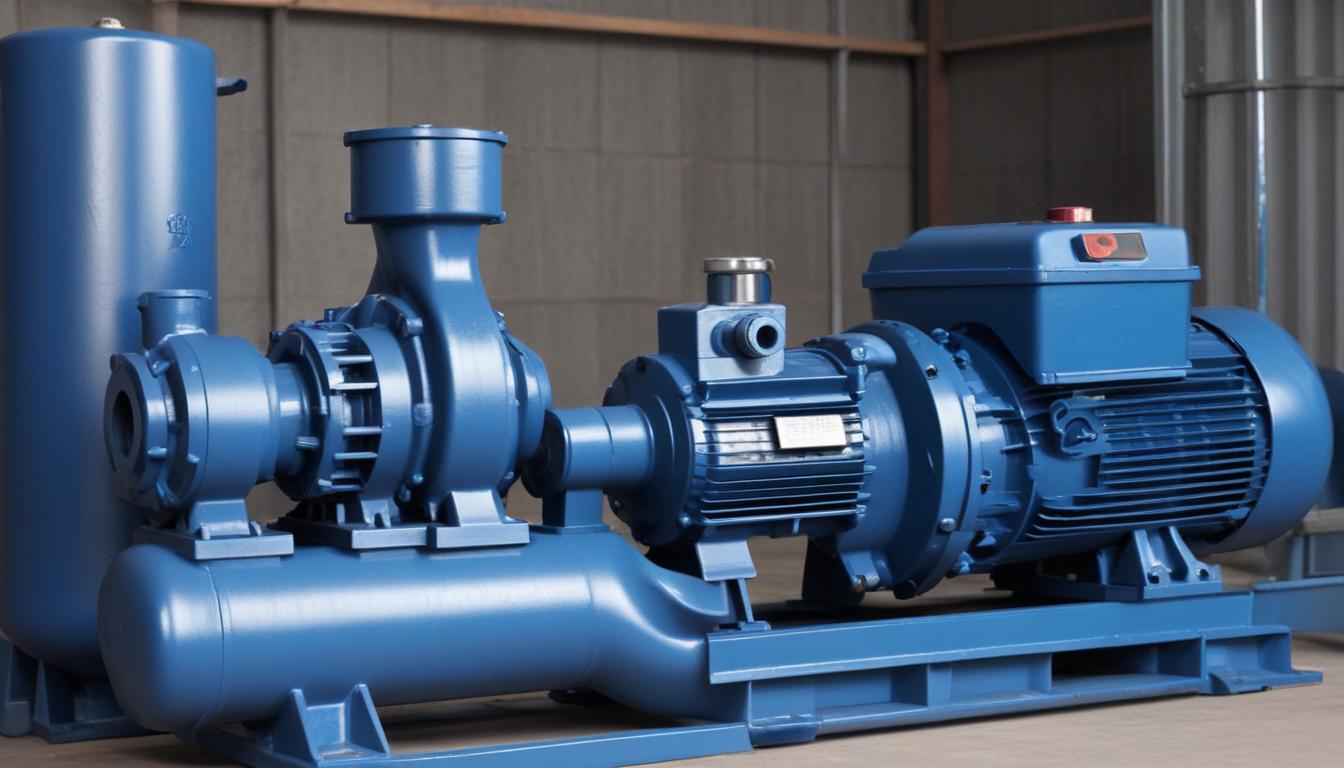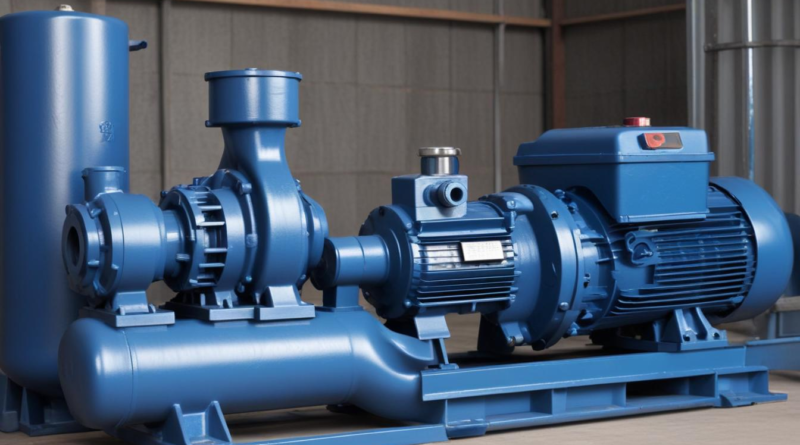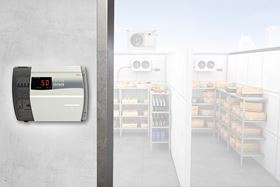how to choose a pump based on installation space
Assessing the available installation space is a crucial initial step in the pump selection process. This evaluation ensures that the chosen pump fits seamlessly within the designated area while allowing for efficient operation and maintenance. The following criteria should be meticulously considered:
- Physical Dimensions: Accurately measure the height, width, and depth of the installation area. Compare these measurements with the pump’s specifications to ensure a proper fit.
- Clearance Requirements: Adequate space around the pump is necessary for installation, operation, and future maintenance. Typically, a minimum clearance of 12 inches on all sides is recommended, but this may vary based on the pump type and manufacturer guidelines.
- Accessibility: Ensure that the pump and its components are easily accessible for routine inspections, repairs, and replacements. Consider doorways, corridors, and pathways that provide unobstructed access.
- Environmental Conditions: Evaluate the installation environment for factors such as temperature, humidity, and potential exposure to corrosive substances. These conditions may influence the type of pump and protective measures required.
- Utilities and Connections: Identify the locations of electrical, plumbing, and ventilation connections. Proper placement of these utilities is essential for the pump’s functionality and safety.
To facilitate a comprehensive assessment, the following table outlines common spatial considerations and their impact on pump selection:
| Criterion | Considerations | Impact on Pump Selection |
|---|---|---|
| Space Dimensions | Height, width, depth measurements | Determines maximum pump size and configuration |
| Clearance | Minimum surrounding space for operation | Affects pump type and installation layout |
| Accessibility | Ease of access for maintenance | Influences pump brand and serviceability features |
| Environmental Factors | Temperature, humidity, corrosive elements | Requires specific materials and protective coatings |
| Utility Connections | Availability and placement of electrical and plumbing | Determines compatibility with existing systems |
By meticulously evaluating these aspects of the installation space, you can make an informed decision that aligns with both the functional requirements and spatial constraints of your project, ultimately facilitating an effective and efficient pump selection process.
determining pump dimensions
Determining the pump dimensions is a vital component in the pump selection process, ensuring that the chosen unit fits seamlessly within the designated installation space while meeting operational requirements. Accurate dimension assessment involves several key criteria:
- Overall Size: Measure the pump’s height, width, and depth to confirm it fits within the available space without impeding other equipment or access pathways.
- Mounting Configuration: Consider the pump’s orientation and mounting style (e.g., vertical, horizontal, base-mounted) to ensure compatibility with the installation layout.
- Connection Interfaces: Verify that the inlet and outlet ports align with existing piping systems, accounting for any necessary adapters or modifications.
- Clearance for Accessories: Allow space for ancillary components such as motor mounts, control panels, and vibration dampeners, which may extend beyond the pump’s primary dimensions.
- Ventilation and Cooling: Ensure adequate space around the pump for airflow and cooling mechanisms, which are essential for maintaining optimal performance and preventing overheating.
The table below highlights essential dimensional aspects and their implications on pump selection:
| Dimension | Considerations | Impact on Pump Selection |
|---|---|---|
| Height | Vertical clearance in the installation area | Restricts selection to pumps that fit within height limitations, influencing the type and model choice |
| Width | Available horizontal space | Determines the pump’s footprint and affects the arrangement of multiple units if necessary |
| Depth | Front-to-back space required | Affects the accessibility for maintenance and the placement of additional components |
| Connection Sizes | Compatibility with existing piping and fittings | Influences the ease of integration and may limit the choice to pumps with specific connection standards |
| Weight | Structural support capabilities | Requires verification that the installation area can bear the pump’s weight, potentially necessitating reinforced flooring or supports |
| Mounting Configuration | Orientation and attachment method | Ensures that the pump can be securely mounted in the available space, aligning with operational dynamics |
| Clearance for Accessories | Space for motors, panels, and dampeners | Affects the overall footprint and may require selecting pumps with integrated accessories to save space |
| Ventilation and Cooling | Airflow requirements around the pump | Determines the need for additional cooling solutions or placement adjustments to maintain performance |
Additionally, consider the following guidelines to optimize dimension assessment:
- Measure Twice, Buy Once: Double-check all measurements of the installation space and compare them with the pump’s specifications to avoid incompatibility issues.
- Plan for Future Expansion: Allocate extra space for potential future upgrades or the addition of ancillary equipment, enhancing the longevity and flexibility of your installation.
- Consult Manufacturer Specifications: Refer to detailed product datasheets and installation manuals provided by pump manufacturers to ensure all dimensional requirements are met.
- Utilize 3D Modeling: Employ 3D design software to visualize the pump within the installation space, identifying any spatial conflicts before procurement.
By meticulously evaluating these dimensional factors, you can ensure that the selected pump not only fits within the installation space but also operates efficiently and reliably, thereby streamlining the pump selection process and minimizing potential installation challenges.
considering accessibility and maintenance
Ensuring adequate access for maintenance is essential for the longevity and efficient operation of your pump system. Proper accessibility not only facilitates routine inspections and repairs but also minimizes downtime and reduces the risk of operational disruptions. When evaluating accessibility and maintenance within the installation space, consider the following criteria:
- Space for Maintenance Activities: Allocate sufficient room around the pump to accommodate maintenance tasks, including inspection, cleaning, and part replacements. Typically, a clearance of at least 24 inches is recommended to provide ample workspace for technicians.
- Ease of Access: Position the pump in an area that is easily reachable through doorways, service hatches, or removable panels. Avoid tight corners or obstructed pathways that could hinder maintenance personnel from performing their duties effectively.
- Accessibility of Components: Ensure that critical components such as valves, seals, and electrical connections are readily accessible. This accessibility allows for quicker diagnostics and repairs, enhancing system reliability.
- Safety Considerations: Incorporate safety features such as emergency shut-off switches, adequate lighting, and clear signage. Safe access reduces the risk of accidents during maintenance operations.
- Space for Tools and Equipment: Provide dedicated storage or workspace for maintenance tools and equipment. This organization ensures that necessary tools are available when needed, streamlining maintenance processes.
- Frequent Maintenance Requirements: Consider the frequency and complexity of maintenance tasks required for the specific pump type. Pumps with higher maintenance needs may necessitate more accessible installation spaces to accommodate regular servicing.
The table below outlines key accessibility and maintenance factors and their impact on pump selection:
| Criterion | Considerations | Impact on Pump Selection |
|---|---|---|
| Maintenance Clearance | Space around the pump for servicing | Influences the size and placement of the pump within the installation space |
| Component Accessibility | Ease of reach to critical parts | Determines the complexity and ease of performing maintenance tasks |
| Safety Features | Presence of safety mechanisms and signage | Affects the overall safety and compliance of the installation |
| Tool and Equipment Space | Dedicated areas for maintenance tools | Ensures efficiency and organization during maintenance operations |
| Maintenance Frequency | Regularity of required maintenance | May dictate the need for more accessible or modular pump designs |
To optimize accessibility and maintenance within your installation space, consider the following guidelines:
- Plan Layout Strategically: Design the installation layout to prioritize easy access to the pump and its components. Position the pump in a location that minimizes obstructions and allows for straightforward entry by maintenance personnel.
- Utilize Modular Designs: Select pumps with modular or easily disassembled components. Modular designs facilitate quicker repairs and part replacements, enhancing overall maintenance efficiency.
- Incorporate Adjustable Supports: Use adjustable mounting supports to allow for easy alignment and leveling. This flexibility simplifies maintenance tasks such as pump removal and installation.
- Implement Remote Monitoring: Integrate remote monitoring systems to track pump performance and detect issues proactively. Remote diagnostics can reduce the need for frequent physical inspections, saving time and resources.
- Train Maintenance Personnel: Ensure that maintenance staff are well-trained in the specific pump systems installed. Proper training enhances the effectiveness of maintenance activities and reduces the likelihood of errors.
By meticulously addressing accessibility and maintenance criteria within the installation space, you can enhance the operational reliability and lifespan of your pump system. This proactive approach not only simplifies routine maintenance but also supports a more efficient and effective pump selection process, ensuring that the chosen pump aligns with both operational needs and spatial constraints.
evaluating mounting options
 Selecting the appropriate mounting option is a critical aspect of the pump selection process, as it directly influences the pump’s stability, performance, and ease of maintenance. Various mounting configurations are available, each with distinct advantages and suitability depending on the specific requirements of the installation space. The following criteria should be considered when evaluating mounting options:
Selecting the appropriate mounting option is a critical aspect of the pump selection process, as it directly influences the pump’s stability, performance, and ease of maintenance. Various mounting configurations are available, each with distinct advantages and suitability depending on the specific requirements of the installation space. The following criteria should be considered when evaluating mounting options:
- Stability and Support: Ensure that the mounting method provides adequate support to maintain the pump’s alignment and prevent excessive movement during operation. Stability is essential to minimize wear and prolong the pump’s lifespan.
- Vibration Isolation: Select mounting options that effectively isolate vibrations generated by the pump. Proper vibration isolation reduces noise levels and prevents structural damage to surrounding equipment and infrastructure.
- Alignment and Positioning: Accurate alignment between the pump and connected piping is crucial for efficient operation. The mounting system should allow precise positioning to achieve optimal alignment, reducing the risk of leaks and operational inefficiencies.
- Flexibility for Future Modifications: Consider whether the mounting solution accommodates potential future changes, such as pump upgrades or modifications to the installation layout. Flexible mounting options can simplify adjustments and expansions.
- Compatibility with Existing Structures: Assess the compatibility of the mounting option with the existing infrastructure. The chosen method should integrate seamlessly with floor types, wall materials, and available support structures.
- Ease of Access for Maintenance: Ensure that the mounting configuration allows easy access to the pump for routine maintenance and repairs. Accessibility is vital for minimizing downtime and facilitating efficient maintenance operations.
The table below summarizes common mounting options along with their key characteristics and suitability considerations:
| Mounting Option | Characteristics | Suitability Considerations |
|---|---|---|
| Floor-Mounted | Installed directly on the floor using a mounting base or pad | Ideal for heavy-duty applications requiring robust support; requires a level and stable floor surface |
| Wall-Mounted | Attached to a vertical surface such as a wall | Suitable for installations with limited floor space; requires strong wall structures to support the pump’s weight |
| Base-Mounted | Mounted on a dedicated base or platform, often with adjustable feet | Provides flexibility in leveling and alignment; useful for varying floor conditions and vibration isolation |
| Suspended | Hanging the pump from overhead structures using brackets or hangers | Conserves floor space; requires secure overhead support and precise alignment to prevent undue stress on connections |
| Floating Mount | Installed on vibration-damping mounts or isolators | Enhances vibration isolation; beneficial in environments where noise reduction is a priority |
| Rail-Mounted | Mounted on adjustable rails for easy repositioning | Facilitates alignment adjustments and maintenance access; suitable for dynamic installation environments |
To ensure optimal mounting selection, consider the following guidelines:
- Conduct a Structural Assessment: Evaluate the structural integrity of the installation site to determine the feasibility of different mounting options. Ensure that floors, walls, or overhead structures can support the pump’s weight and operational forces.
- Incorporate Vibration Dampeners: Utilize vibration isolation mounts or pads to reduce the transmission of vibrations to the surrounding infrastructure. This approach enhances operational stability and minimizes noise pollution.
- Prioritize Accessibility: Design the mounting layout to provide unobstructed access for maintenance activities. Ensure that the pump can be easily reached without maneuvering around other equipment or structural elements.
- Ensure Precise Alignment: Use adjustable mounting bases or rail systems to achieve precise alignment between the pump and connected piping. Proper alignment prevents operational inefficiencies and reduces the risk of leaks.
- Plan for Future Maintenance: Select mounting options that allow for straightforward removal and reinstallation of the pump. Ease of disassembly is beneficial for extensive maintenance tasks or pump replacements.
- Refer to Manufacturer Guidelines: Adhere to the pump manufacturer’s mounting recommendations and specifications. Manufacturer guidelines provide essential information on suitable mounting methods and installation procedures to ensure optimal performance.
By carefully evaluating mounting options against these criteria, you can select a mounting configuration that not only fits within the installation space but also supports the pump’s operational requirements and maintenance needs. This strategic approach ensures a reliable and efficient pump system, aligning with both functional demands and spatial constraints.
selecting appropriate pump type
Selecting the appropriate pump type is a fundamental aspect of the pump selection process, directly influencing the efficiency, reliability, and suitability of the pump for the specific application and installation space. Various pump types offer distinct operational characteristics, performance capabilities, and spatial requirements. To make an informed decision, it is essential to evaluate the following criteria:
- Fluid Characteristics: Analyze the properties of the fluid to be pumped, including viscosity, temperature, chemical composition, and the presence of solids or abrasives. Different pump types are designed to handle specific fluid characteristics effectively.
- Flow Rate and Pressure Requirements: Determine the necessary flow rate (measured in gallons per minute or liters per second) and the required pressure (measured in psi or bar). These parameters will guide the selection of a pump type that can meet or exceed the operational demands.
- Energy Efficiency: Consider the energy consumption of the pump type, as higher efficiency models can lead to significant cost savings over time. Evaluate the pump’s motor efficiency and the potential for energy recovery systems.
- Space Constraints: Assess the installation space available and select pump types that fit within the dimensional limitations while allowing for proper installation and maintenance.
- Operational Environment: Take into account the environmental conditions where the pump will operate, such as exposure to corrosive substances, extreme temperatures, or moisture. Choose pump types with appropriate protective features and materials.
- Maintenance Requirements: Evaluate the ease of maintenance and the availability of replacement parts for different pump types. Pumps with simpler designs may offer easier maintenance and lower downtime.
- Budget Constraints: Balance the initial acquisition cost with the long-term operational and maintenance expenses. Select a pump type that offers the best value without compromising on performance and reliability.
- Noise Levels: Consider the noise generated by the pump, especially if the installation space is in a noise-sensitive area. Pump types with built-in noise reduction features may be preferable in such scenarios.
The table below provides an overview of common pump types, their key characteristics, and suitability based on various criteria:
| Pump Type | Key Characteristics | Suitable Applications |
|---|---|---|
| Centrifugal Pumps | High flow rates, moderate pressure, simple design | Water supply, irrigation, HVAC systems |
| Positive Displacement Pumps | High pressure, precise flow control, handles viscous fluids | Oil and gas, chemical processing, pharmaceuticals |
| Submersible Pumps | Designed for underwater operation, compact size | Wells, sewage systems, dewatering applications |
| Diaphragm Pumps | Handles corrosive and abrasive fluids, self-priming | Chemical dosing, wastewater treatment, mining |
| Gear Pumps | Reliable for high-viscosity fluids, continuous operation | Lubrication systems, hydraulic applications, food processing |
| Peristaltic Pumps | Gentle handling of fluids, easy maintenance, hygienic | Biotechnology, food and beverage, pharmaceuticals |
| Turbine Pumps | High efficiency, suitable for clean and clear fluids | Municipal water systems, industrial processes, mining |
To streamline the process of selecting the appropriate pump type, consider the following guidelines:
- Perform a Detailed Fluid Analysis: Understand the specific properties of the fluid, including any contaminants or particulates, to ensure the pump type can handle the application without excessive wear or failure.
- Match Pump Specifications to Requirements: Align the pump’s flow rate and pressure capabilities with the system’s demand, ensuring that the selected pump can operate efficiently under the required conditions.
- Assess Energy Efficiency: Compare the energy consumption of different pump types and models. Prioritize pumps with higher efficiency ratings to reduce operational costs and environmental impact.
- Consider Installation Space and Layout: Select pump types that conform to the spatial constraints of the installation area. Compact or modular pump designs may be necessary in confined spaces.
- Evaluate Maintenance Needs: Choose pump types that offer easy access for maintenance and have readily available spare parts. Simplified maintenance procedures can reduce downtime and extend the pump’s lifespan.
- Review Environmental Conditions: Select pump types with suitable materials and protective features to withstand the operational environment, such as corrosion-resistant coatings or sealed housings.
- Plan for Scalability and Flexibility: Consider future expansion or changes in system requirements. Opt for pump types that can be easily upgraded or adjusted to meet evolving needs.
- Consult Manufacturer Expertise: Engage with pump manufacturers or suppliers to gain insights into the best pump types for your specific application and installation space. Manufacturer support can provide valuable guidance and technical assistance.
By carefully evaluating these criteria and adhering to the outlined guidelines, you can select a pump type that not only fits within the installation space but also meets the performance, reliability, and efficiency requirements of your application. This strategic approach ensures a successful pump selection process, optimizing both operational outcomes and spatial utilization.



